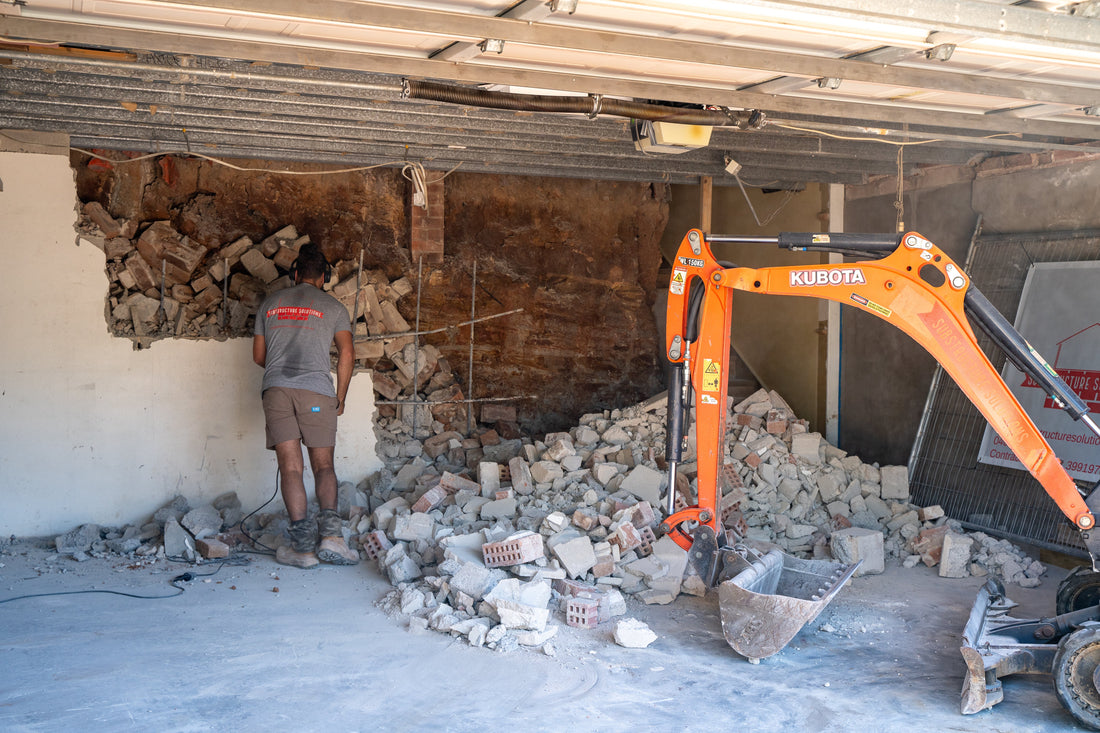
Removing a Wall in Australia: Costs & Key Structural Considerations
Share
Removing a wall can completely change the feel and function of a space. It can open up living areas, create better flow, and even bring in more natural light. But before you grab a sledgehammer, it’s worth understanding the structural considerations involved, especially when dealing with load-bearing walls in Australian homes.
What Do I Need to Know Before Removing a Wall?
You might be asking, what do I need to know before removing a wall? The first step is to figure out whether the wall is load-bearing or non-structural. Load-bearing walls support the weight of the structure above, so removing one without proper support can lead to major safety issues. Non-load-bearing walls, on the other hand, are usually safe to remove but can still contain services like electrical wiring or plumbing.
A licensed builder or structural engineer can inspect your home and identify the wall type. This is a crucial step that can’t be skipped. Removing a load-bearing wall without replacing its support can affect the entire stability of your home.

What to Expect During the Wall Removal Process
Removing a wall isn’t something that happens in a single afternoon. The process typically involves several steps: initial consultation, inspection and assessment, planning and approvals, temporary support installation, structural removal, and final finishing work. Depending on the scope, it may take anywhere from a few days to a couple of weeks to complete. Knowing what to expect can help reduce disruption and ensure the job runs smoothly. An experienced builder will communicate timelines clearly and minimise any inconvenience to your household.
Structural Engineering and Support
If the wall is load-bearing, you’ll need to install an appropriate replacement support, usually a beam or lintel that transfers the weight to the surrounding structure. The size and material of the support beam will depend on the load it carries and the span of the opening.
An engineer will calculate these requirements and prepare plans for council approval. You’ll also need a builder who understands local building codes and safety standards.

Council Approval and Compliance
In most parts of Australia, removing a structural wall requires council approval. You’ll need engineering plans, possibly architectural drawings, and a construction certificate. Your local council may also require an inspection during or after the work.
Working with a builder experienced in wall removal in Sydney can help smooth out this process. They’ll manage the permits, coordinate inspections, and ensure everything is compliant from start to finish.
How Much Does It Cost to Remove a Wall?
So, how much does it cost to remove a wall? The price depends on whether the wall is structural, how large the opening is, and how complex the job will be. Other cost factors include relocating electrical outlets, patching floors and ceilings, and painting or finishing the new space.
As a rough guide, removing a non-load-bearing wall might cost between $1,500 and $3,000. For a load-bearing wall, costs can range from $3,000 to over $10,000 depending on materials, labour, and engineering work.
Keep in mind that cutting corners can cost more in the long run. Poorly removed walls can cause cracking, sagging, and long-term structural damage.

Work With Substructure Solutions Today
Wall removal is more than just demolition; it’s a structural project. At Substructure Solutions, we specialise in safe, engineered wall removal in Sydney. We handle everything from the initial assessment and engineering to approvals, support installation, and clean-up.
If you’re opening up your kitchen, living room, or hallway, we’ll make sure the job is done safely and to code. Our team brings years of experience in structural changes and understands the nuances of working within Australian homes.
Thinking about removing a wall? Contact Substructure Solutions for expert advice and a free consultation.
